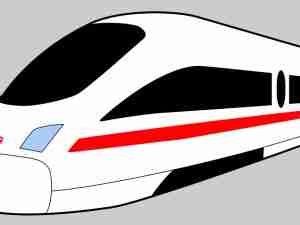These figures were announced by Mr. Emile Hoogsteden, director Containers, Breakbulk and Logistics of the Port of Rotterdam, at the 'Marilog Conference', taking place during 'Transport Logistics'. This is the most important logistics exhibition of the world, taking place bi-annually in Munich.
Hoogsteden said, 'Rail transports grows with double digits for the second year in a row and this year for the first time in a market which as a total stagnates. The Betuwe Route improves our position physically, but at the same times it stimulates the commercial 'lan of the Rotterdam rail sector. Shipping lines, forwarders and other shippers respond very positively to that. Our ambition however reaches goes much further. The Port Authority and Keyrail are working together with market parties on a program to make rail transport more efficient. This program will be rolled out before the end of the year. Technically the locomotives can utilize 25 kV electrical power and the European safety system ERTMS along the full stretch before the end of the year."
TERMINALS
The container terminals can be divided into four groups, on the basis of location, type of cargo and import/export features:
- The deep-sea terminals on the Maasvlakte, 4.6 million (4.6) TEU hinterland transport, with trucks accounting for 47% (49) in 2007. Rail reported 16% (14) and inland shipping 37% (37). A large proportion of the cargo is linked with more distant destinations and the flows are dense.
- The three big terminals in the Waalhaven/Eemhaven area (ECT City, Uniport, RST), 2.6 (2.7) million TEU, divided into 69% (68) truck, 22% (25) barge and 9% (7) train. Over half of the containers are intra-European. Of the intercontinental containers, many have destinations quite close to Rotterdam. The fact that the cargo often consists of expensive refrigerated or frozen products reinforces the function of the truck.
- The other ten or so small terminals, together around 630,000 (800,000) TEU, which record truck shares of between 70 and 100%. By far the largest proportion of this sector consists of intra-European containers, with an emphasis on ro/ro to/from England. This market demands great speed and flexibility.
- Three rail terminals handling much continental rail units (RSC, Bertschi, PCT), in 2008 an estimated equivalent of 300,000 TEU. Continental units are destined for or originate from companies in the port area and the rest of the Netherlands. These are not directly connected to sea transport and therefore are not included in the modal split related figures. The transport (to/from) is by trucks only.
THE FUTURE
Future growth in container throughput will take place at the big terminals in the west. On the Maasvlakte, the Delta Barge Feeder Terminal (favorable for inland shipping) and the Euromax Terminal (with lots of rail capacity) will come into operation in the course of the year. From 2013 onwards, terminals on the Second Maasvlakte will become operational. Here, an attempt will be made to create the following modal split in 2035: inland shipping 45% (=8.2 million TEU), rail 20% (=3.6) and road 35% (=6.4).
MODAL SHIFT
The Dutch government and the Port of Rotterdam pursue a policy aimed at decreasing the share of road haulage; the accomplishment of a modal shift. Since 1993, the truck's share has, according to the 'old' method, declined from 66% to some 50%. In 1993 the tot







